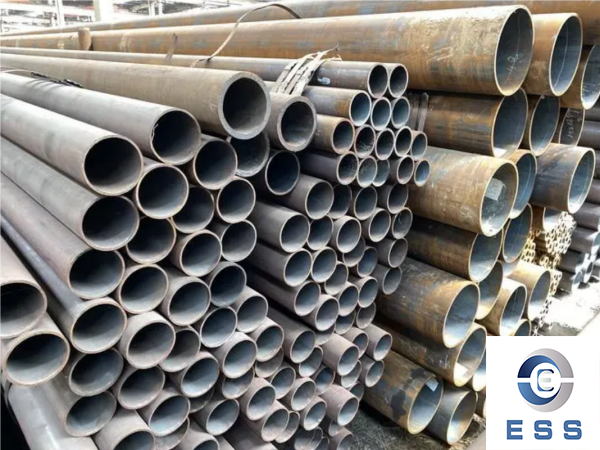Why do SMLS pipes have quality requirements?
SMLS pipe is a long strip of steel with a hollow section and no seams around it. The steel pipe has a hollow cross-section and is widely used as a pipeline for transporting fluids, such as pipelines for transporting oil, natural gas, gas, water and certain solid materials. Compared with solid steel such as round steel, the steel pipe is lighter in weight when the bending and torsional strength is the same. It is an economical cross-section steel and is widely used in the manufacture of structural parts and mechanical parts, such as oil drill pipes, automobile transmission shafts, and bicycles. Frames and steel scaffolding used in building construction, etc.

Quality requirements of SMLS pipe
1. Chemical composition of steel: The chemical composition of steel is one of the most important factors affecting the performance of SMLS pipes, and it is also the main basis for formulating the parameters of rolling process and heat treatment of steel pipes.
a. Alloying elements: intentionally added, according to the application
b. Residual elements: brought in by steelmaking, properly controlled
c. Harmful elements: strict control (As, Sn, Sb, Bi, Pb), gas (N, H, O) refining outside the furnace or electroslag remelting: improve the uniformity of chemical composition in steel and the purity of steel, Reduce the non-metallic inclusions in the tube blank and improve their distribution. the
2. Steel pipe geometric dimension accuracy and shape
a. The accuracy of the outer diameter of the steel pipe: it depends on the method of determining (reducing) the diameter, the operation of the equipment, and the process system. Permissible deviation of outer diameter δ=(D-Di)/Di ×100% D: maximum or minimum outer diameter mm Di: nominal outer diameter mm
b. Steel pipe wall thickness accuracy: the allowable deviation of the wall thickness related to the heating quality of the tube blank, the process design parameters and adjustment parameters of each deformation process, the tool quality and its lubrication quality: ρ=(S-Si)/Si×100% S: maximum or minimum wall thickness on the cross section Si: nominal wall thickness mm
c. Ovality of steel pipe: Indicates the degree of out-of-roundness of the steel pipe. the
d. Steel pipe length: normal length, fixed (double) ruler length, length tolerance
e. Steel pipe curvature: indicates the curvature of the steel pipe: the curvature of the length of the steel pipe per meter, the curvature of the entire length of the steel pipe
f. Cutting slope of steel pipe end face: indicates the degree of inclination between the end face of steel pipe and the cross section of steel pipe
g. Steel pipe end bevel angle and blunt edge
3. Steel pipe surface quality: surface smooth requirements
a. Dangerous defects: cracks, inward folds, outward folds, crushed, separated layers, scars, concaves, convex hulls, etc. the
b. General defects: hemp pits, blue lines, scratches, bruises, slight inner and outer straights, roller marks, etc.
Causes of SMLS pipe defects:
① Due to the surface defects or internal defects of the tube blank. the
② Produced during the production process, such as incorrect rolling process parameter design, rough mold surface, poor lubrication conditions, unreasonable pass design and adjustment. the
③ During the heating and rolling, heat treatment and straightening process of the tube billet (steel pipe), if excessive residual stress is generated due to improper heating temperature control, uneven deformation, unreasonable heating and cooling speed or too large straightening deformation, then It may also cause surface cracks in the steel pipe. the
④Steel management properties: normal temperature mechanical properties, high temperature mechanical properties, low temperature properties, corrosion resistance. The physical and chemical properties of the steel pipe mainly depend on the chemical composition of the steel, the structure and the purity of the steel, and the heat treatment method of the steel pipe. the
⑤Steel pipe process performance: flattening, flaring, curling, bending, welding, etc. the
⑥Metallographic structure of steel pipe: low-magnification structure (macro), high-magnification structure (micro) M, B, P, F, A, S
⑦Special requirements for steel pipes: contract attachments, technical agreements.













 Eastern Steel Manufacturing Co.,Ltd not only improve product production and sales services, but also provide additional value-added services. As long as you need, we can complete your specific needs together.
Eastern Steel Manufacturing Co.,Ltd not only improve product production and sales services, but also provide additional value-added services. As long as you need, we can complete your specific needs together.










